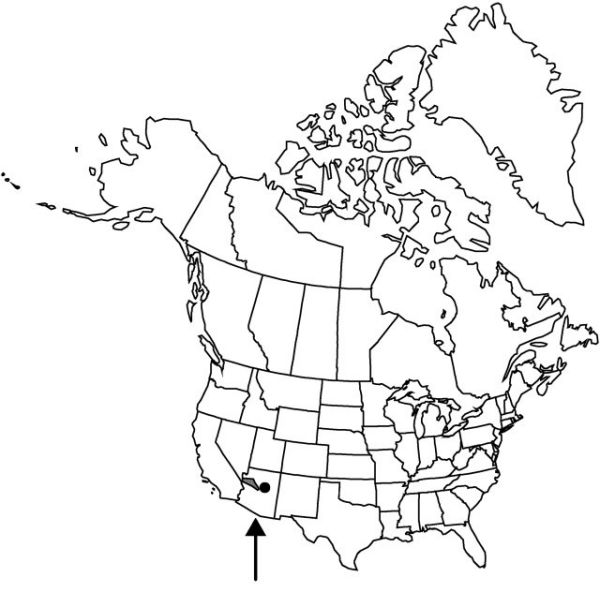Agave mckelveyana
Cact. Succ. J. (Los Angeles) 42: 225, figs. 4–6. 1970.
Plants acaulescent, solitary or sparsely suckering; rosettes 2–4.5 × 3–6 dm, rather open. Leaves spreading, broadest at middle, 17.5–40 × 2.8–5 cm; blade light glaucous green or yellowish green to dark green, usually cross-zoned, linear-lanceolate to lanceolate, rigid, adaxially concave, abaxially convex; margins straight or undulate to crenate, armed, teeth single, firmly attached, well defined, 4–8 mm, 1–3 cm apart; apical spine reddish brown to gray, subulate, 1.5–4 cm. Scape 2–5 m. Inflorescences paniculate, not bulbiferous, open; bracts persistent, triangular, 0.5–2 cm; lateral branches 10–19, ascending, comprising distal (1/4–)1/3–1/2 of inflorescence, longer than 10 cm. Flowers 6–12 per cluster, erect, 3–4 cm; perianth light yellow, tube shallow, broadly campanulate, 2–4.5 × 8–10.5(–18) mm, limb lobes wilting soon after anthesis, spreading, equal or subequal, 11–13 mm; stamens long-exserted; filaments inserted near or at top of perianth tube, erect, yellow, 2.5–3.3 cm; anthers yellow, (7–)9–16 mm; ovary 1.6–2.2 cm, neck slightly constricted, 1–2.5 mm. Capsules short-pedicellate, narrowly oblong to oblong, 3–4.5 cm, apex beaked. Seeds 5–6.5 mm.
Phenology: Flowering mid spring–mid summer.
Habitat: Sandy to gravelly or rocky places with desert scrub, chaparral and pinyon-juniper woodlands
Elevation: 800–2200 m
Discussion
Agave mckelveyana may hybridize with A. deserti var. simplex and A. utahensis var. utahensis in Arizona.
Selected References
None.
